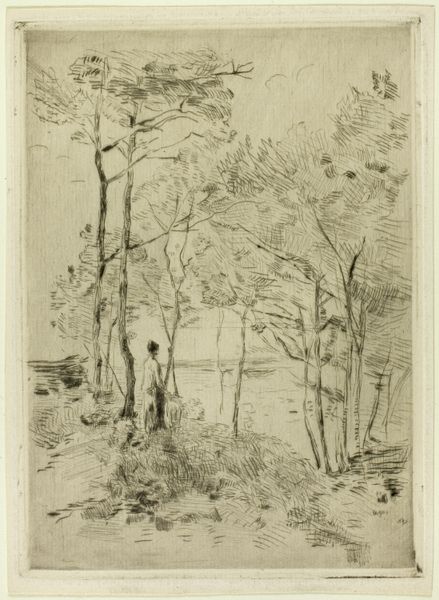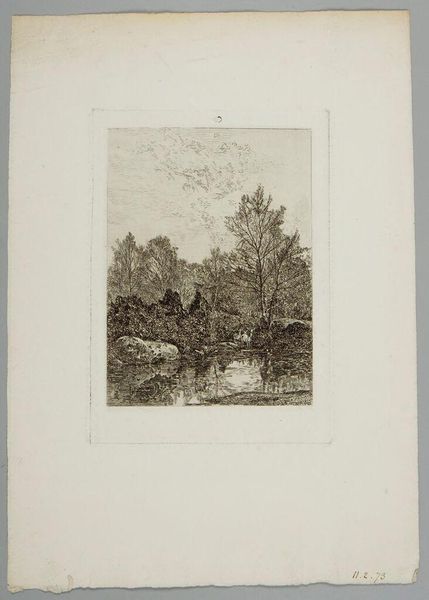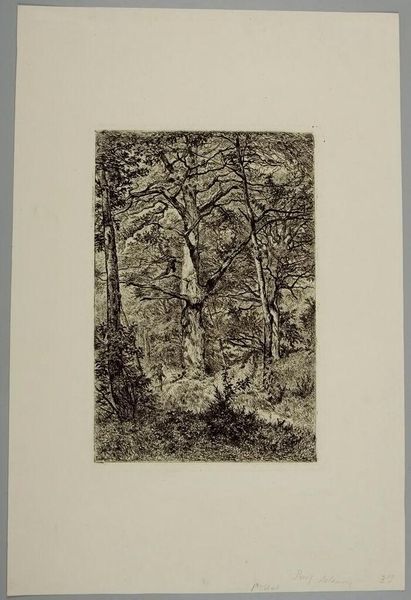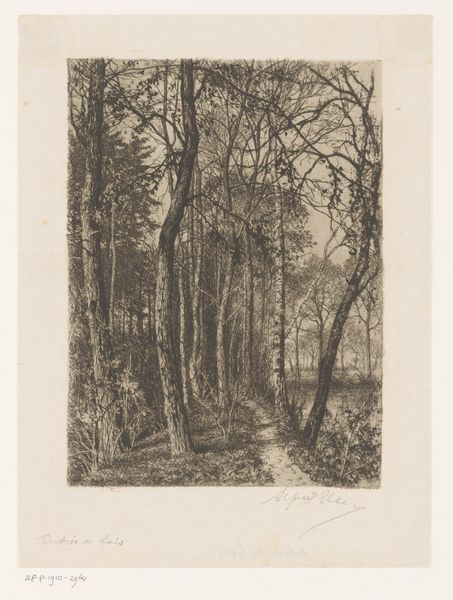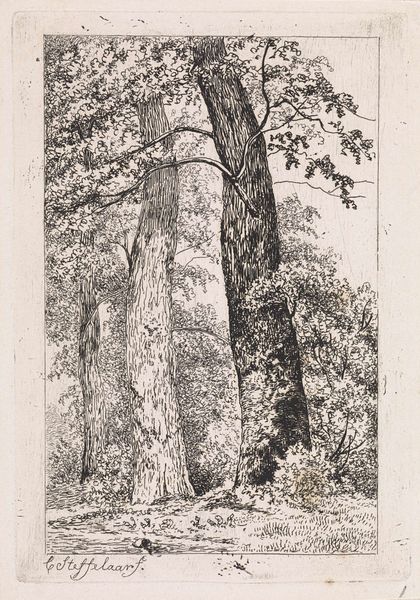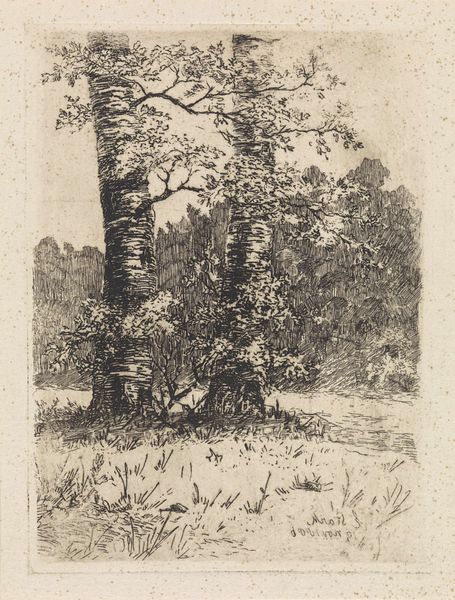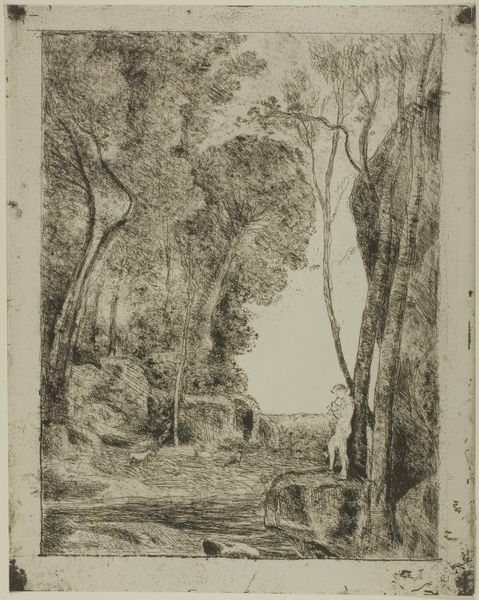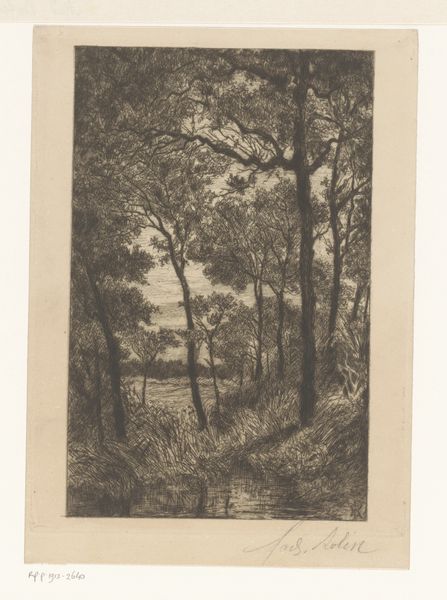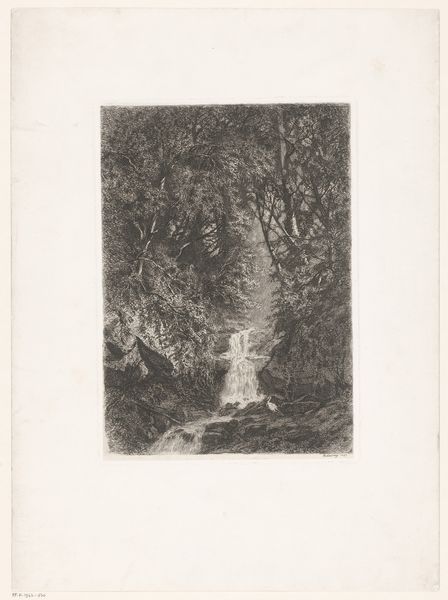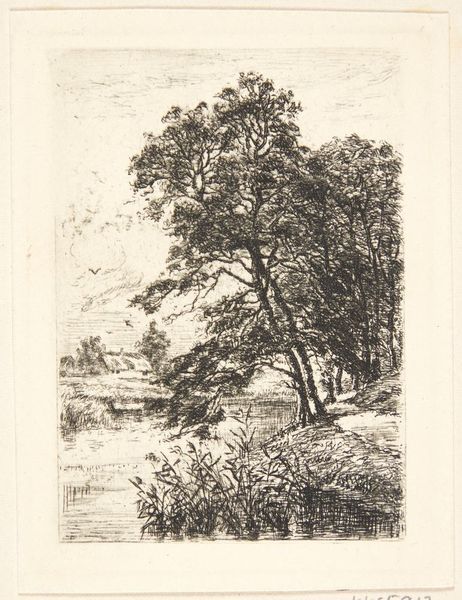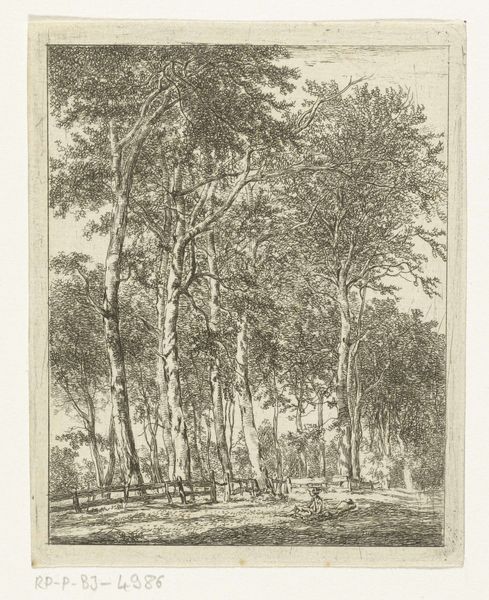
Dimensions: height 89 mm, width 50 mm
Copyright: Rijks Museum: Open Domain
Editor: This etching, titled "Landschap met berken," or "Landscape with Birches," by Jan Willem van Borselen, probably made between 1835 and 1885, presents a simple path into a forest. The density of the marks gives it such a moody, almost claustrophobic feel despite the romantic subject matter. What's your take on it? Curator: It's interesting that you say "claustrophobic." Consider this: landscape art became increasingly popular during the Romantic period, aligning with a growing sense of national identity. How does a seemingly innocuous scene like this, made accessible through printmaking, perhaps serve the broader project of defining and disseminating Dutch identity and pride in the landscape? Editor: I hadn't thought about it that way. So, the very act of depicting the Dutch landscape, even in a small etching, reinforces national pride? Curator: Precisely. And notice the path—a recurring motif in Romantic art. Where does it lead? Whose access to this landscape is being imagined, and how might that be related to socio-political currents of the time? Editor: So, it’s not just a pretty picture; it's about power and access. This image would have been acquired and seen by particular segments of the Dutch population. Curator: Exactly. How was nature being consumed visually and who got to participate in that consumption? Furthermore, how does the mass-produced nature of the etching impact our understanding, making art accessible, yes, but perhaps shaping taste in a very deliberate manner? Editor: That makes me reconsider the "simple" path. There's more to unpack there than I initially thought. Curator: And that is the enduring power of art and its complicated relationship with society!
Comments
No comments
Be the first to comment and join the conversation on the ultimate creative platform.
